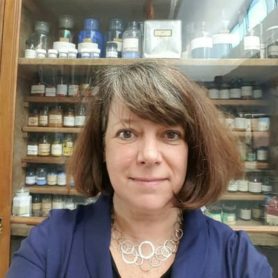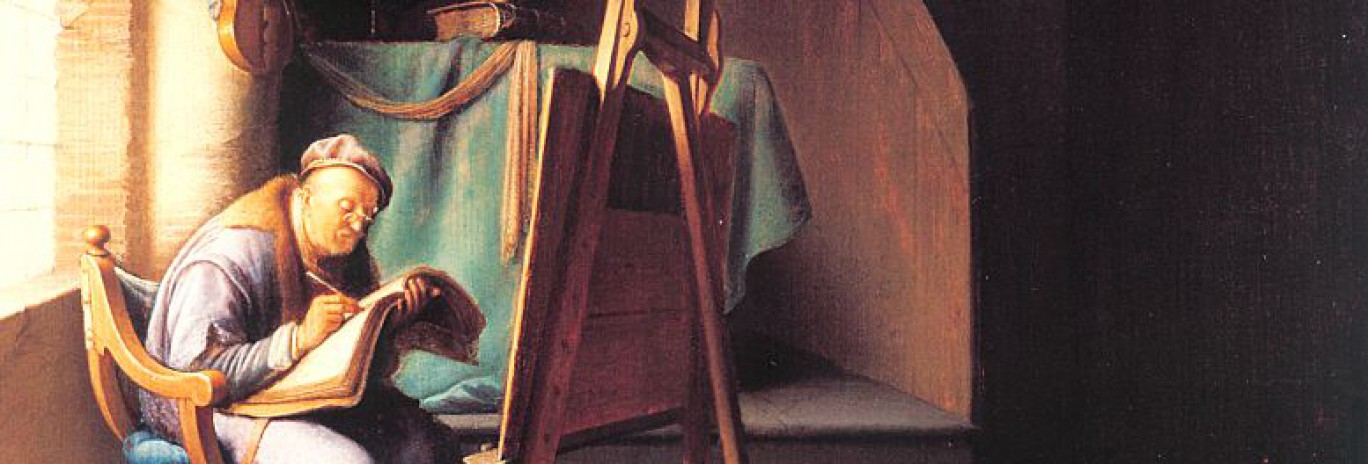TAH interview Erma Hermens, Rijksmuseum and University of Amsterdam
What are the most important research questions being asked in TAH?
I think the most important research questions concern the act of making: insights into the creative process from the idea to the final product and everything that is connected to that. This includes the context in which an artwork was made; the materials, techniques and workshop practices, but also where did these materials come from, what was available at the time, and so on. Although this is very much the field ‘in a nut shell’ and therefore very generic, I think this is really the research area we are looking at. There are specific questions on dating works, authenticity, attribution, and although those are not necessarily the main research aim, they may be addressed through our research into understanding historical techniques, materials, patterns of workshop collaborations, exchange of technical knowledge, and so on. I can make a long list, but it all comes down in the end to understanding the act of making and its context.
Do you consider technical art history a sub-field of art history?
I see it as a part of history of art, as the research questions derive from or are based in history of art. Some consider it a history of art technology, which of course is very much part of it, but understanding the context in which this ‘art technology’ takes place; e.g. the impact of the art market, changes in taste, patronage, trade, developments in science among other things, on artists’ techniques, is crucial for the interpretation of, for example, scientific analytical results, of technical phenomena, idiosyncrasies and so on. It is a kind of branching out into a more interdisciplinary approach by including quite a lot of different areas and methodologies such as material culture and history of science, and scientific analytical methods. However the questions, I think, are firmly placed in history of art and therefore I would prefer to see it under that umbrella.
Is TAH is ‘an enhanced and more scientific’ connoisseurship?
Is it a new kind of connoisseurship? I think yes, you could say that, as, in a way, the combination of research into characteristic stylistic elements, with research into the actual making of the work, into typical technical features, would result in a more scientific kind of connoisseurship, and indeed an enhanced methodology. I know there is a lot of discussion on this. It is important, I think, to try to assess what was the original intention of the artist, and their characteristic style and technique, and we now have a much broader range of ‘tools’ to do just that.
What do you see as the major challenges in TAH education?
I think a technical art historian is something of an intermediary, someone who is creating links and collaborations that are needed to more fully answer the research questions. Therefore a technical art historian needs to have a thorough understanding of materials and techniques and especially of which kind of expertise and technology should be used to examine them. It would be impossible for technical art historians to be a specialist in all these areas but that is not the idea. The idea is that the technical art historian can communicate with different disciplines and knows how to find his or her way in that dialogue, and that is the major challenge. Of course the main task for the technical art historian is to start up the research and come up with questions and then map out the steps through discussions with other specialists. We ask the question “What do we need?” At Glasgow University, what we try to teach our masters students is an understanding of just that: you have a research question and then what is your next step? Hence we show the students different processes, we work with them on objects where we follow all these steps. This way of working is very different from the usual individual research art historians perform, because it is more collaborative, it is team-work, and it is about communication and understanding what various approaches can bring to the research. For example, perhaps the way a particular pigment was traded in the sixteenth century, and why it seemed to have gone obsolete. You may start your own research on the history of trade, economics, politics, new scientific developments, but you might also want to consult specialists in these disciplines. In some cases you might want to identify certain materials. As you know which scientific techniques are available and you are able to identify the one that is most suitable, you contact a scientist to negotiate further investigation. You really need to understand the material to be able to ask those questions. We don’t ask students to have a science background or science in their curriculum, as we do teach them a basic understanding of the scientific methodology that is used in this kind of research. It is all about interdisciplinarity, and communication between the disciplines.


